


สล็อตเว็บตรง เว็บสล็อตแท้ ไม่ผ่านเอเย่นต์ เปิดประสบการณ์ความตื่นเต้นบน เว็บตรง สล็อต ด้วยมิติใหม่ล่าสุด ของเกม สล็อตเว็บตรง แตกง่าย ไม่มีขั้นต่ำ มาพร้อมกับมาตรฐานการบริการระดับสากล อันดับ 1 ในเอเชีย ปั่นสล็อตฟรี และมอบความสนุกสนานในเกม สล็อตเว็บตรง 100% ให้กับสมาชิกที่มีความหลงใหลในการเดิมพัน พนันออนไลน์ สล็อต pg เว็บตรง แตกหนัก มีระบบที่ใช้งานง่าย สล็อตเครดิตฟรี ไม่มีเงินฝากขั้นต่ำ สำหรับเกม สล็อต PG เว็บตรง แตกหนัก ให้ความสะดวกกว่าที่เคย ขอแนะนำให้ทุกคนทำความรู้จักกับ เว็บสล็อตใหม่ล่าสุด 2024 เพลิดเพลินไปกับการปั่นสล็อตบน เกมสล็อตเว็บตรง และการทำกำไรกับ สล็อตเว็บตรง อันดับ 1 ให้ความบันเทิงแบบจัดเต็ม บริการ slot wallet ใช้งานง่าย ปลอดภัย เข้าร่วมเดิมพัน พนันออนไลน์ สล็อต แตกง่าย แตกหนัก ได้เงินจริง 100%

สล็อตเว็บตรง ไม่ผ่านเอเย่นต์ เล่นแล้วได้เงินจริง ไม่มีโกงทั้งนี้ เว็บตรงยังคงพัฒนาอย่างต่อเนื่อง นำเสนอมาตรฐานใหม่ล่าสุด ของ เว็บสล็อตตรง ทำหน้าที่เป็นต้นแบบสำหรับ เว็บตรงไม่ผ่านเอเย่นต์ ที่ได้รับความไว้วางใจจากนักพนันทุกคน ที่เลือกเข้าร่วมเดิมพันบน pg slot เว็บตรง อย่างกว้างขวาง เนื่องจากเป็น เว็บสล็อตวอเลท โดยตรงที่ไม่มีตัวแทน ไม่ผ่านเอเย่นต์ สมาชิกจำนวนมากจึงเลือกที่จะเข้าร่วมและเริ่มเดิมพันอย่างต่อเนื่องกับ สล็อตpg ปัจจุบันได้กลายเป็นเว็บ PG SLOT เว็บตรง เป็นสล็อตแตกง่าย มากที่สุดในอุตสาหกรรมเกมพนันออนไลน์ สำหรับผู้ที่สนใจสัมผัสประสบการณ์ความตื่นเต้น มั่นใจได้ว่าคุณจะไม่ผิดหวังกับคุณภาพของเว็บ สล็อต pg เว็บตรง แตกหนัก เดิมพันง่าย สล็อต เว็บตรงไม่ผ่านเอเย่นต์ ได้เงินจริงแน่นอน
สล็อตเว็บตรง สมัครสมาชิกและคว้าโอกาสในการสร้างรายได้ที่ดี ผ่านสล็อตเว็บตรง ฝาก-ถอน true wallet ไม่มีธนาคาร ไม่มีขั้นต่ำ ธุรกรรมทางการเงิน วอเลท เว็บตรงสล็อต ที่ดีที่สุดในปี 2024 นอกจากนี้ ยังเป็นเว็บเกม สล็อตเว็บตรง แตกง่าย ที่มีประสิทธิภาพ ซึ่งให้บริการ เกมสล็อต ลูกค้าที่เป็นเลิศ พร้อมให้บริการและสนับสนุนลูกค้าทุกระดับ มั่นใจในบริการชั้นยอด ให้การเล่นเกมบน สล็อตเว็บตรงไม่มีผ่านเอเย่นต์ ไม่มีขั้นต่ำ ที่เริ่มต้นได้ง่าย ๆ เพียงแค่ลงทะเบียนเป็นสมาชิกฟรี และเพลิดเพลินกับโปรโมชั่น สล็อตเครดิตฟรี หรือโบนัสพิเศษมากมายรอคุณอยู่
ปั่นสล็อต สนุกบน สล็อตเว็บตรง ทำกำไรได้มากที่สุด สำหรับนักพนันที่ทำเงินได้มากในแต่ละวัน เดิมพันบน เว็บตรง สล็อต หลาย ๆ คนอาจจะคิดว่าต้องลงทุนเงินเป็นจำนวนมาก แต่จริง ๆ แล้วการเริ่มเดิมพันกับ เว็บตรงที่ดีที่สุด ด้วยเงินเพียงขั้นต่ำ 1 บาท ก็เพียงพอแล้ว แลกกับโอกาสลุ้นรางวัลแจ็คพอต แตกบ่อย แตกหนัก สูงถึงล้านบาท คุ้มกว่านี้ไม่มีอีกแล้ว แจ็คพอตนั้นไม่จำกัด แตกง่ายที่สุด และการถอนเงินจะไม่ถูกล็อคยูส สล็อตเว็บตรง แตกง่าย ให้คุณสามารถชนะรางวัลใหญ่ได้จริง สร้างประสบการณ์ที่น่าตื่นเต้นที่สุด บางครั้งแจ็คพอตใหญ่แตกกับเกม PG SLOT อาจออกมาพร้อมกับการหมุนเกมที่มีค่า RTP เกิน 90% เพียงครั้งเดียวเท่านั้น
เกมสล็อตเว็บตรง สามารถเปลี่ยนเงินจากหลักสิบ หลักร้อย เป็นหลักแสนด้วยตัวคุณเองได้แล้ววันนี้ สุดยอดศูนย์กลางสำหรับเกมสล็อต PG ที่แตกรางวัลแบบไร้ขีดจำกัด ให้บริการ สล็อตเว็บตรงแตกหนัก ของจริง เป็นแหล่งรวมเกมสล็อตที่ทำกำไรได้มากที่สุด ด้วยเกมที่น่าตื่นเต้นที่สุด ปั่นสล็อตฟรี จากผู้ให้บริการเกม SLOT เว็บตรงที่ดีที่สุด มีให้บริการแล้ววันนี้! รับรางวัล สล็อตเครดิตฟรี ไม่มีขีดจำกัด เลือกทำกำไรกับเกมสล็อตเว็บตรง ไม่ผ่านเอเย่นต์ มากกว่า 500 เกมขึ้นไป แต่ละเกมบน เว็บสล็อต PG คัดสรรมาอย่างดี เต็มไปด้วยคุณภาพครบวงจร
สล็อตเว็บตรง กำลังกลายเป็นการลงทุนที่ดีที่สุด ทางเข้า pg slot wallet ยังคงเป็น เว็บคาสิโนออนไลน์ ที่นำเสนอโปรโมชั่นพิเศษ เว็บสล็อตใหม่ล่าสุด แก่สมาชิกของ เว็บสล็อตตรง ดังนั้นไม่ว่าคุณจะเล่นเกมพนันออนไลน์ เพื่อสร้างรายได้เสริมหรือรายได้หลักก็คุ้มค่า หากคุณลงทะเบียนเป็นสมาชิก สล็อตเว็บตรง 100% ให้การฝากถอนไม่มีขั้นต่ำ สล็อตวอเลท พร้อมมีข้อเสนอดี ๆ ให้คุณ โดยที่คุณไม่ต้องลงทุนสักบาทเดียว นักพนันจำนวนนับไม่ถ้วนสามารถรับเงินจำนวนมหาศาลได้จาก เว็บสล็อตแท้ 100% ทางเข้าpg slot auto ที่ดีที่สุด
สมัครสมาชิก pg slot เว็บตรง ง่ายไม่มีเงื่อนไข คลิกเพื่อลงทะเบียนเป็นสมาชิกใหม่ได้เลย เว็บสล็อตตรงไม่ผ่านเอเย่นต์ คุ้มค่าที่สุด ทดลองเล่นสล็อต pg ซื้อฟรีสปิน สามารถเข้าร่วมทดลองเล่นเกม PG SLOT เว็บตรง ทั้งหมดบนเว็บได้โดยไม่มีข้อจำกัดใด ๆ บริการจากสล็อตเว็บตรง ฝาก-ถอน true wallet ไม่มีขั้นต่ำ ไม่ผ่านเอเย่นต์ สล็อต888 ทำให้คุณสามารถเล่นได้หลายรอบตามที่คุณต้องการ และเลือกประเภทเกมได้เต็มที่ รับความเชี่ยวชาญก่อนตัดสินใจลงทุนด้วยเงินจริงวันนี้ ปั่นสล็อตฟรี ไม่มีข้อจำกัด ที่ สล็อตเว็บตรง 100 นี่ที่เท่านั้น












เว็บสล็อตตรง เป็นอีกหนึ่ง เว็บคาสิโนออนไลน์ ที่คุณสามารถไว้วางใจได้ 100% เมื่อเข้าร่วมเดิมพัน คุณจะได้สัมผัสกับความรู้สึก ปลอดภัย เชื่อถือได้ สร้างประสบการณ์ ปั่นสล็อต ที่ยอดเยี่ยม บนเว็บ สล็อต ทดลองเล่นฟรี ถอนได้ อย่างแน่นอน ทำกำไรและคว้ารางวัลโบนัสได้ง่าย ๆ ที่นี่ เว็บสล็อต PG ทั้งหมด คุณภาพการันตีด้วยมาตรฐานจากบริษัทชั้นนำที่นักพนันทั่วโลกยอมรับ นักพนันต่างวางใจได้ว่าหากคุณเลือกเดิมพันกับ เว็บตรงไม่ผ่านเอเย่นต์ 1 บาท ก็ถอนได้ ที่ง่ายต่อการ ปั่นสล็อต แตกง่าย สล็อต777 คุณจะได้สัมผัสกับประสบการณ์เดิมพันที่ยอดเยี่ยมกับ สล็อตเว็บตรงไม่ผ่านเอเย่นต์ ไม่มี ขั้นต่ำ ที่คุณไม่เคยสัมผัสจากเว็บอื่นอย่างแน่นอน
เว็บคาสิโนออนไลน์ ที่เข้าทำกำไรได้ตลอดทั้งวัน แจกโบนัสสล็อต แจ็คพอตแตกง่ายเพียบ! บน สล็อตเว็บตรง รับประกันถูกใจสายลงทุนมากที่สุด สล็อตเครดิตฟรี รับง่าย แค่คุณเข้าร่วมเดิมพันที่เว็บ Slot wallet ช่องทางการลงทุนที่ทำให้คุณจับเงินแสนได้เร็ว สล็อตแตกง่าย PG wallet ไม่ต้องลงทุนมากแต่อย่างใด ปั่นสล็อต จากเกมสล็อตออนไลน์ ที่พร้อมมอบทั้งความสุขและโอกาสรวยทางลัดให้กับทุกคน เน้นเรื่องความ ปลอดภัย ไม่ต้องเป็นคนที่ดวงดีที่สุดในโลก คุณก็มีโอกาสจับเงินล้าน จากการ ทดลองเล่นสล็อต pg ซื้อฟรีสปิน เพียงปลายนิ้วสัมผัสเท่านั้น ทรูวอเลท ให้ระบบการฝากถอนที่รวดเร็วและไว้ใจได้ เป็นแหล่งเดิมพันทำกำไรดีที่สุด ถ้าหากคุณไม่เคยสัมผัสกับโอกาสแจ็คพอตแตก สล็อตเว็บตรง ไม่เชื่อว่าจะมีใครรวยจากเกมเดิมพันจริง ๆ ท้าพิสูจน์ด้วยตาของคุณเอง สล็อตฝากถอน true wallet เว็บตรง ที่มาแรงที่สุด 2024

สมัครสมาชิกเข้าร่วมเดิมพันที่ เว็บตรง100% ใคร ๆ ก็คว้าโบนัสสล็อตและแจ็คพอตใหญ่ติดมือกลับบ้านไปได้อย่างง่ายดาย ท้าพิสูจน์ความจริงให้กับตัวคุณเองได้แล้วตอนนี้ เว็บสล็อต PG ใหม่ล่าสุด 2024 ผลตอบแทนคุ้มค่าเกินความคาดหมายอย่างแน่นอน โดยให้บริการระบบ True Wallet ที่มีคุณภาพ ต่อไปนี้
ทางเข้าpg ยอดนิยมมากที่สุด สำหรับนักลงทุนรุ่นใหม่ล่าสุด ในปี 2024 คือ ระบบการเดิมพันเกมสล็อตออนไลน์ จากสล็อตเว็บตรง ฝาก-ถอน true wallet ไม่มีธนาคาร ไม่มีขั้นต่ำ เป็นผู้ให้บริการเกมชั้นนำที่ทุ่มเทให้กับการพัฒนาระบบ ที่ตรงกับความต้องการและพฤติกรรมของผู้เล่น เว็บสล็อต PG ช่วยให้สมาชิกเข้าถึงบริการได้โดยตรงผ่านทางเว็บ pg slot ทางเข้า โดยไม่จำเป็นต้องดาวน์โหลดแอพพลิเคชั่นใด ๆ เว็บตรงไม่ผ่านเอเย่นต์ ทำให้สะดวกและใช้งานง่ายกว่าที่เคย สล็อต ฝาก-ถอน true wallet ไม่มี บัญชีธนาคาร ที่ดีที่สุด ทำกำไรได้แน่นอน
การเข้าถึงเกม สล็อตเว็บตรงทรูวอเลท รุ่นใหม่ง่ายกว่าที่เคย ใคร ๆ ก็สามารถเข้าถึง เว็บตรง สล็อต ฝากถอนไม่มีขั้นต่ำ 1 บาท ก็ ถอนได้ วอ เลท ได้เพียงปลายนิ้วสัมผัส เว็บตรง pg สล็อต สำหรับสล็อตออนไลน์และเกมคาสิโนออนไลน์ ได้รับการออกแบบให้เข้ากันได้กับอุปกรณ์ใหม่ ๆ สล็อต ทรูวอลเล็ต ไม่ว่าจะเป็นโทรศัพท์มือถือยี่ห้อใดหรือรุ่นใดก็ตาม PG SLOT รองรับทั้งระบบ iOS และ Android ไม่ว่าคุณจะมีมือถือเก่าหรือใหม่ คุณก็ยังสามารถปั่นสล็อต pg slot auto กับการเล่นบน เว็บตรง 100% ใช้งานง่ายที่สุด โดยไม่มีข้อกำหนดฝากถอนขั้นต่ำ การนำทางที่ง่ายดายและบริการลูกค้าที่เป็นเลิศ ประสบการณ์เล่นบน เว็บเกมสล็อต นั้นน่าตื่นเต้นพอ ๆ กับการเล่นในคาสิโนจริง นอกจากนี้คุณยังสามารถทำเงินได้ทุกที่ทุกเวลาอย่างอิสระ
เมื่อคุณนึกถึงการเดิมพัน สล็อตออนไลน์ ให้นึกถึง สล็อต เว็บตรงไม่ผ่านเอเย่นต์ไม่มีขั้นต่ำ มอบประสบการณ์ที่สมบูรณ์แบบและราบรื่น pg168 นำความสนุกมาสู่หน้าประตูบ้านคุณโดยตรง ไม่ว่าคุณจะชอบเกมสล็อตยอดนิยม หรือบาคาร่าสุดเร้าใจก็ตาม สล็อตpgเว็บตรงไม่ผ่านเอเย่นต์ไม่มีขั้นต่ํา ด้วยระบบที่ทันสมัยและใช้งานง่าย เว็บตรงสล็อต มอบความสะดวกสบายให้คุณเพลิดเพลินกับการพนันได้อย่างเต็มที่ เว็บสล็อต อันดับ 1 ให้การสมัครสมาชิก ทรูวอลเล็ต การฝากและการถอนเงินทำได้ง่าย ๆ ผ่านระบบอัตโนมัติที่ล้ำสมัย สะดวก รวดเร็ว และติดอันดับสูงสุด
หากคุณเป็นผู้ชื่นชอบ เว็บสล็อตใหม่ล่าสุด 2024 และมองหาการอัพเดตเกมใหม่ ๆ อยู่ตลอดเวลา เว็บคาสิโนออนไลน์ที่นำเสนอเกมยอดนิยม เว็บสล็อตวอเลท คือตัวเลือกที่ดีที่สุดสำหรับคุณ สล็อต666 พร้อมที่จะมอบเกมใหม่ล่าสุด และเป็นที่นิยม เพื่อให้คุณเพลิดเพลินกับการปั่นสล็อต โดยไม่มีการหยุดชะงัก สล็อต pg เว็บตรง แตกหนัก สามารถเลือกเกมที่เหมาะสมและเริ่มลงทุน เพื่อให้แน่ใจว่าประสบการณ์เล่นเกมจะราบรื่น สล็อตเว็บตรงไม่ผ่านเอเย่นต์ ให้การสนับสนุนผู้ใช้ไม่จำกัด พร้อมด้วยเจ้าหน้าที่ ทุ่มเทเพื่อให้แน่ใจว่าการเล่นเกมจะราบรื่นสำหรับทุกคน นอกจากนี้ PG SLOT เว็บตรง ยังพร้อมให้คำปรึกษาด้านการลงทุนแก่คุณ ตลอด 24 ชั่วโมง

เกมทั้งหมดภายใต้กลุ่ม PG Soft มุ่งเน้นไปที่การให้บริการเกมคาสิโนที่หลากหลาย โดยเน้นไปที่สล็อตออนไลน์เป็นพิเศษ ซึ่ง PG Soft เป็นชื่อย่อของบริษัทผู้พัฒนาเกม Pocket Games Soft เกมที่พัฒนาโดยบริษัทนี้โดดเด่นจากเกมอื่น ๆ โดยเฉพาะอย่างยิ่งในแง่ของกราฟิกชั้นยอด และแนวคิดการเล่นที่เป็นนวัตกรรมใหม่ ทางเข้าpg slot auto ยกระดับประสบการณ์สล็อตไปสู่อีกระดับหนึ่ง สล็อต pg เว็บตรง แตกหนัก สร้างความประทับใจไม่รู้ลืมให้กับผู้เล่นอย่างแน่นอน

เกมสล็อตออนไลน์ Jilli Slot มอบความสะดวกสบายจากการเข้าถึงง่าย สล็อตเว็บตรง100% ทำให้ผู้เล่นได้เพลิดเพลินทุกที่ทุกเวลา ให้ความคุ้มค่ามาก และเหมาะสำหรับผู้เล่นทุกเพศ ทุกวัย เลือกเกมของค่ายนี้ไปเล่นคุ้มค่าแน่นอน ทุกเกมมีคุณสมบัติที่เป็นเลิศ ทั้งสีสันที่สดใสและกราฟิกที่คมชัด ทำให้ได้ประสบการณ์ที่สมจริงมากขึ้น

918Kiss Casino เป็นแอพพลิเคชั่นที่ใช้งานง่าย ซึ่งได้รับความนิยมในการเล่นเกมสล็อตออนไลน์ ถูกสร้างขึ้นในประเทศมาเลเซีย และเข้าถึงผู้เล่นหลายล้านคนจากทั่วทุกมุมโลก คุณสามารถเล่นเกมคาสิโนได้จากทุกที่ที่คุณต้องการ เพียงแค่คุณมีการเชื่อมต่ออินเทอร์เน็ตที่ใช้งานได้ 918Kiss ยังเป็นมิตรกับมือถือ ดังนั้นคุณจึงสามารถเข้าถึง เกมสล็อตเว็บตรง ได้ตลอดเวลา

ต้นกำเนิดของ Slotxo สามารถย้อนกลับไปสู่จุดเริ่มต้นที่เรียบง่าย ในฐานะเกมที่พัฒนาขึ้นเพื่อเล่นบนเว็บสล็อตเว็บตรง ในตอนแรกสามารถเข้าถึงได้ผ่านเว็บเบราว์เซอร์ของคอมพิวเตอร์เท่านั้น และไม่ได้รับความนิยมมากนัก แต่สามารถดึงดูดผู้เล่นให้เข้าร่วมมากขึ้น ด้วยการปรับเปลี่ยนใหม่ และกลายเป็นปรากฏการณ์สำคัญ ในที่สุดก็ถูกซื้อกิจการโดยบริษัท Slot Xo Game ซึ่งเป็นบริษัทที่จัดตั้งขึ้น ซึ่งเดิมดำเนินการเครื่องสล็อตในอเมริกา และพยายามเข้าสู่เวทีออนไลน์ การซื้อกิจการครั้งนี้นำไปสู่การสร้างเกม Slotxo ยอดนิยมที่รู้จักกันในปัจจุบัน

PP Slots คือ ผู้พัฒนาเกมและผู้ให้บริการเกมที่มีชื่อเสียงอย่าง Pragmatic Play เด่นที่สุดในอุตสาหกรรม iGaming โดยค่าย Pragmatic Play เป็นบริษัทที่นำเสนอผลิตภัณฑ์และเนื้อหาชั้นนำ สำหรับตลาดสล็อต คาสิโนสด บิงโก และอื่น ๆ ทั่วโลก รับประกันว่าลูกค้าจะได้รับประสบการณ์เล่นเกมที่ราบรื่น ซึ่งสามารถเล่นได้ทั้งบนแพลตฟอร์มสมาร์ทโฟนและเดสก์ท็อปปัจจุบัน PP Slots มีเกมให้เลือกมากกว่า 100 เกม และยังคงพัฒนาเกมใหม่อย่างต่อเนื่อง

ปัจจุบัน Joker Gaming เป็นผู้ให้บริการเกมออนไลน์ที่ได้รับความนิยมสูงสุด โดยนำเสนอบริการชั้นยอดบนแพลตฟอร์มการพนันออนไลน์ที่ดีที่สุด ด้วยเกมที่มีให้เลือกมากมาย ทั้งเกมคาสิโน เกมยิงปลา สล็อตออนไลน์ ผู้เล่นสามารถสนุกไปกับระบบการเดิมพันที่ทันสมัยและใช้งานง่าย เกมดังกล่าวมีกราฟิกที่น่าทึ่ง และเอฟเฟกต์เสียงสมจริง ทำให้ Joker Gaming เป็นตัวเลือกอันดับต้น ๆ ในอุตสาหกรรมเกมออนไลน์
สล็อตเว็บตรง เน้นเรื่องความรวดเร็วและมีประสิทธิภาพในการจ่ายเงินรางวัล เกม สล็อต PG เว็บตรงแตกหนัก มีความน่าเชื่อถือ โดยสิ่งสำคัญคือต้องเลือกเว็บที่ให้บริการ สล็อตเว็บตรง แตกง่าย โดยไม่มีตัวกลางหรือกระบวนการที่ซับซ้อน รับประกันงานบริการที่มีคุณภาพและการชำระเงินที่รวดเร็ว สล็อตเว็บตรง มีช่องทางการสื่อสารที่สะดวกสบาย โดยมีผู้ดูแลระบบคอยให้ความช่วยเหลือตลอดเวลา ใช้งานง่าย การจ่ายเงินรางวัลจะโอนโดยตรงไปยังบัญชีของคุณ ทำให้มั่นใจในการทำธุรกรรมที่ปลอดภัย การเล่นเกมสล็อต PG เว็บตรงแตกหนัก ถือเป็นประสบการณ์ที่สมบูรณ์แบบและเติมเต็ม ปั่นสล็อตเว็บตรง มีมาตรฐานที่สร้างความไว้วางใจให้กับผู้เล่นได้สูงเลยทีเดียว
ตอบ: สูตรที่สล็อตเว็บตรง ไม่ผ่านเอเย่นต์ แนะนำ เพิ่มโอกาสในการชนะ คือ สูตร AI ใช้งานง่าย และให้ความแม่นยำค่อนข้างสูงมาก สร้างกำไรได้อย่างมหาศาล
ตอบ: ระบบออโต้ ของเว็บตรง มีความเสถียรเป็นอย่างมาก เพราะมีการพัฒนาระบบอย่างต่อเนื่อง จะไม่เกิดการสะดุดระหว่างเล่นเกมขึ้นอย่างแน่นอน เพื่อให้แน่ใจว่าสมาชิกจะเล่นเกมได้อย่างราบรื่นและสนุกได้อย่างไม่ยั้ง
ตอบ: สัมผัสประสบการณ์เกมที่ปลอดภัยและเชื่อถือ ได้ผ่าน สล็อตเว็บตรง ที่กำลังมาแรงและทำเงินได้ง่าย ไม่มีฝากถอนขั้นต่ำ เริ่มต้นลงทุนด้วยการเดิมพันเพียง 1 บาท เพียงแค่การหมุนครั้งเดียว ก็สามารถชนะแจ็คพอตให้คุณได้ เข้าถึงได้ง่าย และมีตัวเลือกเกมสล็อตมากมายให้เลือก แต่ละเกมให้เงินจริงทุกวัน เกมใหม่และน่าสนใจอัพเดทตลอด อย่าพลาด!